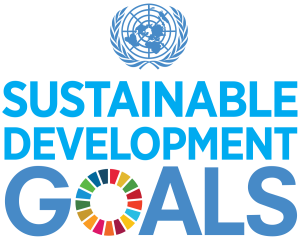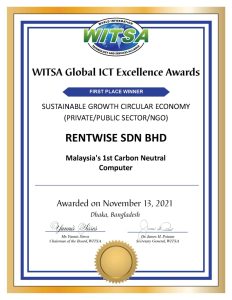Environmental Sustainability
Harmonising the use of IT with the Environment
It takes an estimated 240 kg of fuel, 22 kg of chemicals and 1.5 tonnes of water on average to produce one desktop computer with monitor. Imagine this: Spending all this resources to manufacture one new PC, use it for 3 years and dispose of it.
How long can we continue doing this without adversely impacting the environment?
How long can we continue doing this without adversely impacting the environment?





Net Zero by 2050?
Let’s start with Green IT.
As Malaysia works towards achieving its net-zero emissions target by 2050, decarbonization across all sectors must become a priority. Technology has a crucial role to play in fighting climate change, and information technology (IT) is now an essential tool for running any business. Therefore, a sound strategy for reducing carbon emissions must begin by making our computing needs more sustainable. It’s vital that we consider how we can use technology to achieve this goal.
The environmental impact of purchasing new computers is immense to say the least. It involves the extensive use of resources and emission of significant amounts of CO2. This effect is magnified for medium to large businesses that acquire thousands of laptops for their workforce.
Going with the circular approach of renting remanufactured laptops presents a sustainable alternative to purchasing new ones.
Rentwise is a participant of the initiatives of the UN Global Compact in supporting its principles on human rights, labor, environmental sustainability, and anti-corruption since 2020, while also being aligned to the United Nations Sustainable Development Goals 4, 12, 13 & 17.
The environmental impact of purchasing new computers is immense to say the least. It involves the extensive use of resources and emission of significant amounts of CO2. This effect is magnified for medium to large businesses that acquire thousands of laptops for their workforce.
Going with the circular approach of renting remanufactured laptops presents a sustainable alternative to purchasing new ones.
Rentwise is a participant of the initiatives of the UN Global Compact in supporting its principles on human rights, labor, environmental sustainability, and anti-corruption since 2020, while also being aligned to the United Nations Sustainable Development Goals 4, 12, 13 & 17.
How are we impacting the environment?
Using a remanufactured laptop helps reduce carbon footprint by as much as 70%. That means a user of remanufactured laptops is only responsible for a mere 30% carbon footprint or approximately 105 kg C02e. This is in contrast to an estimated carbon footprint of a new laptop at 350 kg C02e. This pales in comparison to a new desktop at roughly 800 kg C02e.

CO2 Reduction
When a laptop is remanufactured, it prevents approximately 316kg (700lb) of CO2 emissions that would have been generated if a new laptop had been purchased. This means that for a batch of 1,000 remanufactured laptops, the CO2 reduction is equivalent to removing 80 cars from the road for an entire year.

Water Saving
By choosing to reuse computer components instead of producing new ones, we are able to save more than 190,000 liters of water that would have been consumed during the extraction, refining, and production process.
Resource Preservation
The production of a single laptop component requires the extraction and consumption of 1,200 kg of Earth's mineral resources. By opting for remanufactured computers, we not only prevent the further depletion of resources, but also avoid the generation of e-waste that results from the disposal of a laptop.
Linear economy and circular economy represent two fundamentally different approaches to managing and using resources.
Linear Economy
A linear economy is like a one-way track where we extract resources from the earth, make things, use them, and then dispose of them as waste at the end of its lifespan. This creates a lot of waste and is not sustainable in the long run.
Circular Economy
A circular economy is like an endless loop where we try to keep resources and products in use for as long as possible. This means reducing waste, reusing and recycling materials, and regenerating natural resources. In a circular economy, we aim to create a closed-loop system where waste is minimized, and materials are continuously fed back into the economy, reducing the need for new resources extraction.


Malaysia's 1st Carbon Neutral Remanufactured Computer
Did you know that the way we use and dispose of our computers can have a big impact on the environment? In a linear economy, we tend to throw away old products once we're done using them, which can cause pollution and wastage of valuable resources. But in a circular economy, we strive to reduce waste by reusing products for as long as possible. So not only can we extend the life of our computers, we can also make a positive impact on the environment by reducing waste and conserving resources.



